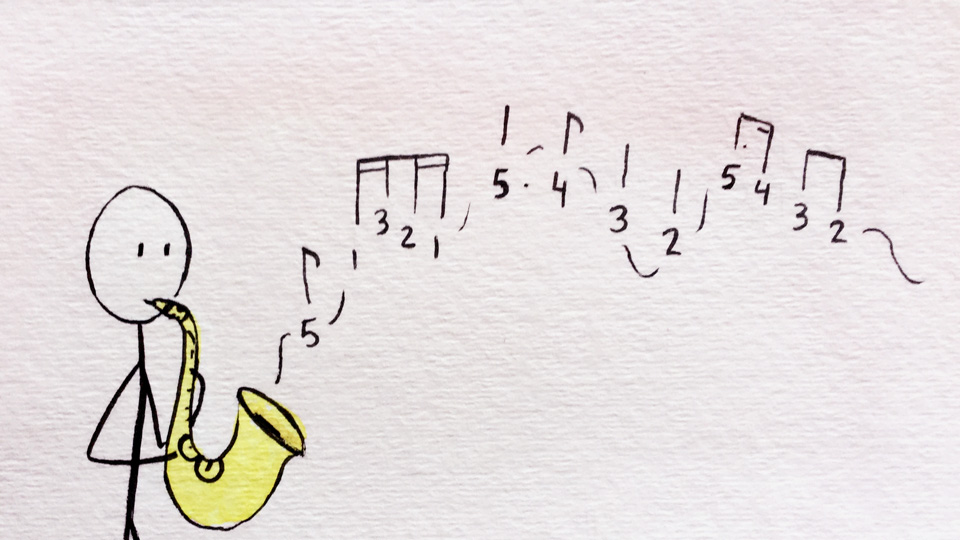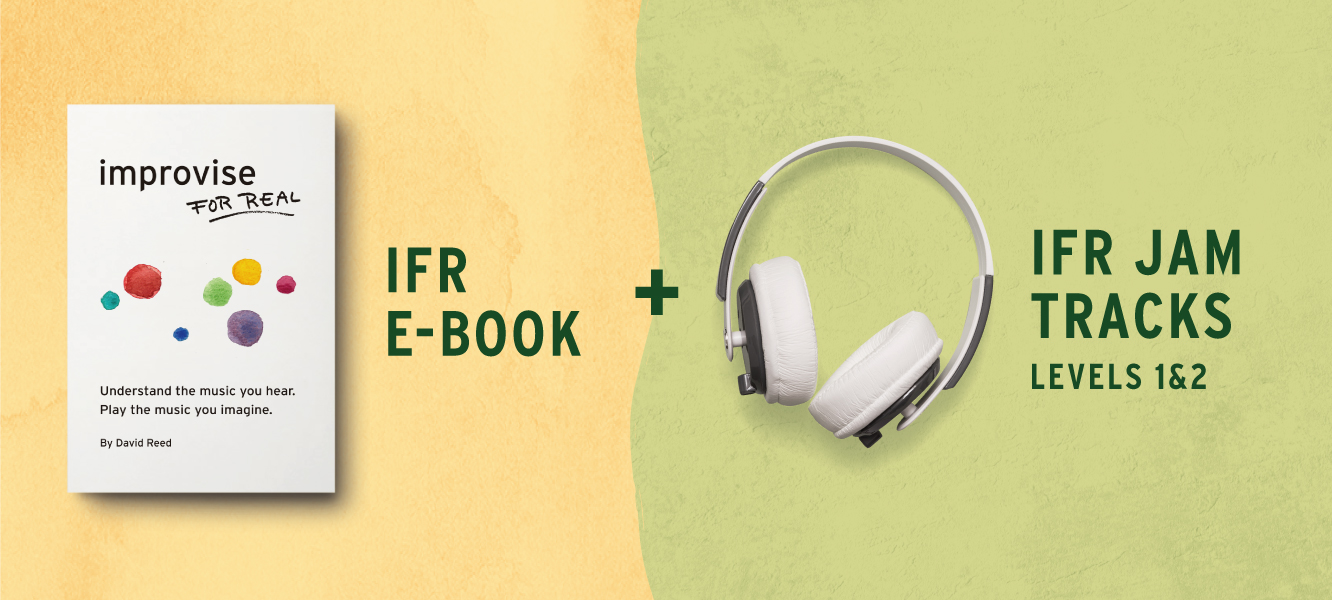By Mireia Clua
Learning to think relative to the key of the music is the most important thing you can do to accelerate your music learning. This article explains four immediate benefits to your music practice from adopting the tonal point of view.
What is the "tonal point of view" in music learning?
Most traditional music notation is expressed in terms of absolute note names like F# and Bb. This is perfect for orchestra performers who must know exactly which note they are supposed to play, but it doesn't explicitly state the role of each note within the key of the music. Obviously this role can be deduced, but this requires an extra step of analysis.
By contrast, the tonal point of view describes each note relative to the overall key of the music. The system of reference is the major scale, and each note is described by it's tonal number. The tonal number refers to the position of each note relative to the key of the music. For example in the key of D, the note F# would be called "three" and the note F natural would be called "flat 3".
Why do we use the tonal point of view to study music in IFR?
Music is relative
Our ear perceives the feelings of the notes by their context and not by their absolute pitches. For example, the note G can be a very consonant note like the fifth in the key of C, or it can be a very dissonant note like the flatted second in the key of F#. So a certain frequency doesn’t give a note a particular feeling. It is the context that provides that feeling. That context is the tonality. So if we want to talk about the sound and function of each note, then we need to use a language that describes the notes relative to their tonal context.
Relative coordinates vs. absolute coordinates
When you go to a salsa dance class they don’t show you a particular choreography using absolute coordinates: “You move your right foot to the coordinates 40.773ºN - 73.985ºW, then you move your left foot to the coordinates 40.771ºN - 73.987ºW”. Instead of that, they tell you: “Move your right foot forward one step, then move your left foot one step to the left.” The absolute position of your foot relative to the earth’s latitude and longitude is not the important thing. What’s important is the movement relative to where you were standing a moment ago.
In the same way, in music what’s important is the position of each note relative to the overall key of the music. This is what your ear perceives when you listen to music. So if we want to talk about these sounds, then we need a language that describes their position relative to the key.
The 4 advantages of the tonal approach to music
In Improvise for Real we study music using tonal numbers, but we didn’t invent the tonal approach. It has been around for centuries! In fact most modern courses on harmony and music theory are based on scale degrees and tonal numbers, because it's the only way to describe the function of each note. And also, if you are passionate about music, isn’t it interesting to look at it from all possible points of view? Here are four immediate benefits of seeing music this way:
#1 - It demystifies music theory. Any musical idea can be expressed in any key. This creates twelve different occurrences of any particular melody or harmonic concept that we might want to study. If you are trapped in the language of the absolute note names, then this means that you need to learn each concept twelve different times. Even worse, the tonal relationships between the notes become obscured or forgotten because they cannot easily be seen when the notes are expressed as absolute names like F# and Bb.
By contrast, if you keep your focus on the tonal numbers themselves, then you can raise your thinking up a level and you can see the tonal relationships clearly. This also accelerates your learning by a factor of twelve, because you don't have to learn each concept repeatedly in twelve different keys.
#2 - It enables you to recognize chords and melodies by ear. An ability that many musicians struggle to develop is to recognize chords and melodies by ear. But when you have names for the chords and the notes relative to the key, for the first time you have names for the sensations that you actually hear and feel in the music. (The 1 chord always sounds like the 1 chord. The 2 chord always sounds like the 2 chord, etc.). For this reason, adopting the tonal language is essential to developing the ability to recognize chords and melodies by ear.
#3 - It solves transposing. One of the biggest challenges that musicians have is to be able to play a song in a new key, transposing it in the moment. Let's say you are playing in a band and a new singer asks you to play one of the songs in a different key that accommodates better her musical range. You will have to stop, think, calculate whole steps and half steps up or down, erase or add accidentals... These calculations can be difficult to perform in the moment. But instead of that, if you learn the melodies and the chords of the songs by their scale degrees, then you can easily play them in any key.
Let’s take Autumn Leaves as an example. What are the first four notes of the song? If you learned the song using the notes’ absolute names you will tell me that the first four notes are E, F#, G, C, because you learned the song in the key of G. But if you learned Autumn Leaves with tonal numbers you will tell me that the first four notes of the song are 6, 7, 1, 4. Having this knowledge, you will be able to play the melody in any key with no hesitation, because you will always be oriented in the key of the music and you will know where the melody occurs within this key.
#4 - In improvisation, it enables you express the notes that you imagine. Musicians who are taught to improvise using licks and formulas can easily go their entire lives without even considering the possibility of playing directly from their imagination. But for us in Improvise for Real, playing from the imagination is the whole point. The reason why we are so interested in recognizing chords and melodies by ear is because if we can recognize the sounds that we hear, then we can also recognize the sounds that we imagine. And so for the first time we can improvise from a totally different place expressing the sounds that we hear in our mind.
Thinking in tonal numbers is a fascinating mental shift and it enables you see the inner workings of music. I invite you to give it a try!
Download “Improvise for Real” and begin YOUR creative journey today!
The complete “Improvise for Real” method is available as a 250 page illustrated e-book and jam tracks which you can download and use on any smartphone, tablet or computer. Just click the link below to begin enjoying a fun and creative daily practice that will show you how music and harmony really work. Discover your own musical creativity and play the music inside you!


